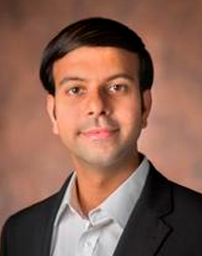Tweaking research presentations to foster community and knowledge construction: A focus on peer review
by Cynthia J. Brame
I recently got to watch a class session that taught me a new and very effective way to help students build their science identity by building a scientific community. It was awesome, and I can’t wait to figure out how to adapt it to one of my classes.

Here’s the setting: Piran Kidambi, Assistant Professor of Chemical and Biomolecular Engineering, teaches a course called Synthesis and Applications of 2D Nanomaterials to senior Chemical Engineering undergraduates and graduate students from several disciplines. Piran wants to make sure that students understand how we build knowledge in the sciences through experimentation, model building, peer critique and revision. He also wants students to understand how key techniques work, and therefore what they can contribute to this process.
Before this class, students had worked in pairs to read research articles describing how a particular technique was used to investigate 2D nanomaterials. They had submitted a single slide presenting the key findings on Brightspace. In class, each pair of students had 2 minutes to present their slide and 3 additional minutes for questions. Here’s the key part: Students weren’t graded on their presentation at all (although Piran made a point of telling each group that they did a great job with these highly technical and challenging presentations). Instead, they received points for asking and answering “peer review” questions in a collegial and generative way. The questions varied; some were truly what I would think of as peer review, probing at whether the conclusions the authors had made were valid, while others really had to do with students ensuring they understood the technique. In every case, however, the questions and the responses were received with respect and appreciation. And every student in this ~15 person class participated with questions and/or answers that seemed meaningful to them.
Piran kept a tally of each group’s questions and responses on a whiteboard at the front of the room as a means to celebrate students’ contributions. He thinks that visual contributes to students’ engagement. I certainly don’t think it hurt—Piran was very generous with his tally marks and his verbal encouragement—but I think they key was the underlying idea that these students were trying to build an understanding of something really challenging together. I loved seeing how Piran had created a setting for students to build a scientific community and how that could foster each individual’s science identity within it. And I think it developed from a simple switch in focus: valuing questions and thinking and the idea of knowledge construction more than polished presentations and knowing.
.
.
.
.
.
.

Leave a Response